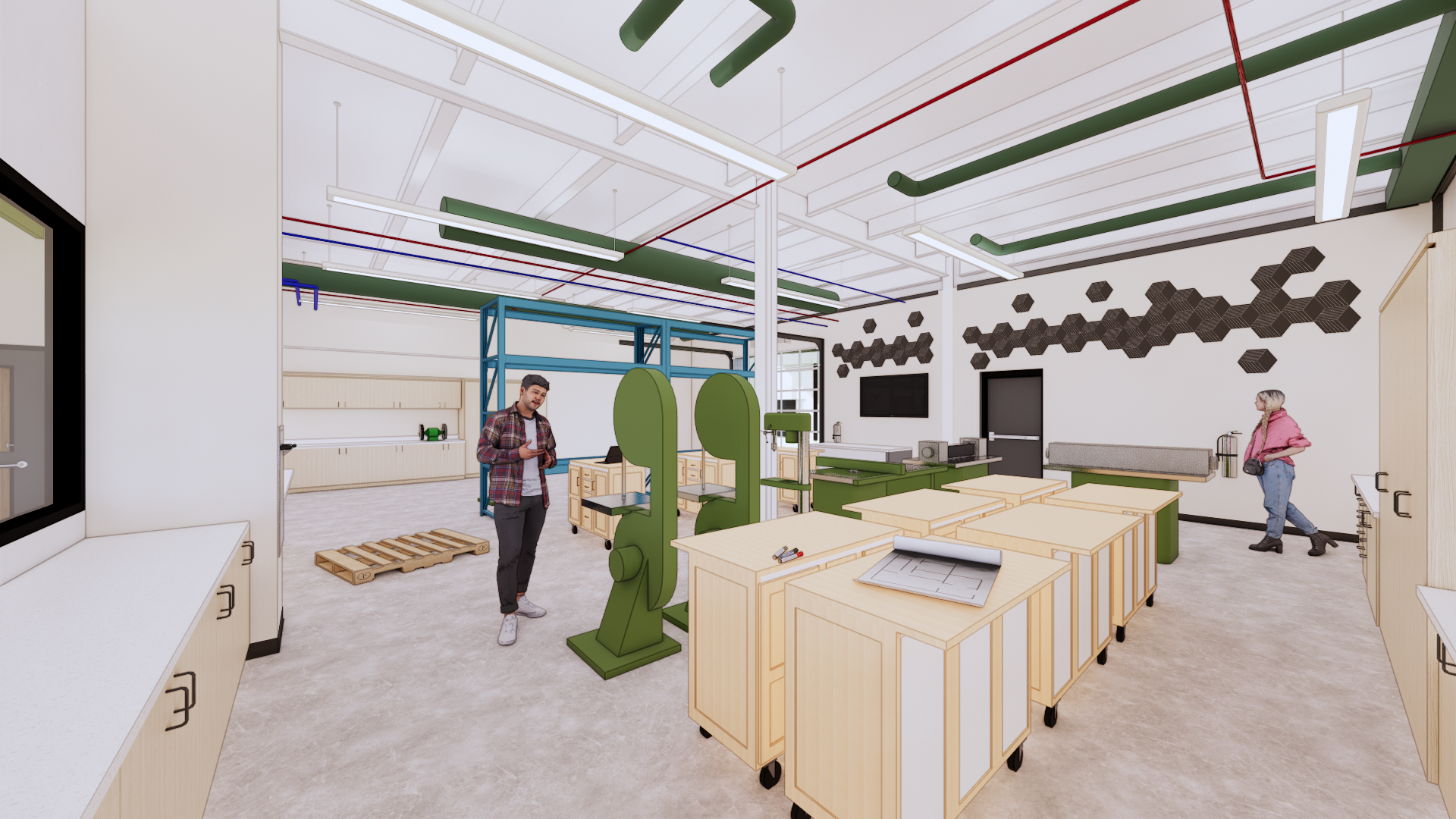Share This Story
Today’s agriculture looks nothing like the past, and neither should your classrooms.
New ag-tech programs are equipping students with hands-on experience in sectors like agribusiness and food science. For agrarian districts, it isn’t just about education; these spaces are catalysts for unprecedented economic and career development. In fact, ag-tech students are even more likely to graduate.
But a successful program hinges on more than upgraded facilities—it demands a clear plan. Administrators can harness four key steps to cultivate truly value-adding classrooms.
1. Identify and Prioritize Community Needs
Thriving ag-tech programs are rooted in their communities. Before embarking on a capital project, school leaders should work with stakeholders to pinpoint which industries are most relevant to their region.
For example, in areas steered by large-scale farming, precision crop science gives students vital skills to drive the local economy, feeding directly into work with creameries and landscape garden centers.
Regardless, when programs are tailored to workforce needs, they bolster the commercial and cultural fabric and make a stronger case for funding.
2. Build Consensus with a Clear Roadmap
A high-performing ag-tech program starts with a well-defined curriculum but succeeds through early engagement, fostering broader buy-in and ownership of shared goals.
Districts can spark this momentum by:
- Hosting public forums and surveys to gather input
- Enlisting elected officials to advocate for funding
- Aligning programs with bigger-picture initiatives for amplified impact
In rural areas especially, schools should think beyond their own borders. By partnering with neighboring districts and towns, they can develop mutually beneficial programs that expand access, lower costs and strengthen funding appeals. Cooperative arrangements, like sharing specialized Career & Technical Education (CTE) classrooms, demonstrate cross-community collaboration, which is favored by funding agencies and state-level planners.

At Lyons CSD, ag-tech students studying floral design and culinary arts will support special events at the adjoining community center—connected to the school by a pedestrian bridge—by crafting custom table settings and floral arrangements.
3. Forge Partnerships That Lead to Careers
Like other CTE avenues, ag-tech empowers students with applied competencies for lucrative jobs in drone operation, welding, horticulture and more; many of which require only certification.
In this vein, districts might integrate farm-to-table programs where students grow and sell crops or manage school-based businesses in areas such as maple syrup production. Moreover, joining forces with farms, industry experts and colleges to establish a curriculum enhances credibility while creating pipelines to employment. Organizations like Future Farmers of America (FFA) even provide internships and job placements, bridging workforce gaps.
4. Design Learning Spaces That Do It All
Once an ag-tech vision has been established, the next step is creating versatile classrooms that support a wide range of activities. Purpose-built facilities that combine “clean” and “dirty” spaces enable students to engage in the full breadth of agricultural learning, from research to traditional farming.
Clean Ag-Tech
As the industry evolves, exposure to automation prepares students for modern roles. In the 1940s, one U.S. farmer fed 19 people—today, that number is 172. This leap in productivity is propelled by advancements in ag-tech like autonomous tractors, which farm up to 1/3 of U.S. acreage, mitigating fuel use, labor and waste.
Clean spaces reflect this shift, with major features such as:
- Drone Labs for crop monitoring, including tools that can detect plant stress before it’s visible to the human eye—combatting the 70% rise in food demand projected by 2050.
- Hydroponic and Aquaponic Setups that teach sustainable growing methods
- Farm Management Software for interpreting data and making informed decisions
- 3D Printers and CNC Machines for prototyping custom tools
- Robotics Zones for smart farming applications
These climate-controlled hubs typically incorporate wipeable surfaces; ample power; high-speed data; and modular furniture for layout changes, accommodating both individual and group work. Glass walls can also promote an open atmosphere while maintaining necessary separation for specialized equipment.

This “concessions” classroom at Fillmore CSD, which includes a teaching kitchen, will launch a new farm-to-table program where students manage the full food cycle from production to sale.
Fillmore’s ag-tech curriculum will strengthen community relationships by fostering collaboration between students and the local community. With strong personal leadership, agricultural students can run successful Supervised Agricultural Experiences (SAEs), contributing to both their personal growth and the community’s agricultural advancements. This initiative aims to empower students to become leaders in the field, driving innovation and sustainability in agriculture while enhancing the district’s and community’s overall success.
Dirty Ag-Tech
By contrast, dirty ag-tech classrooms give students permission to be loud and get their hands dirty—literally—by replicating real settings such as barns, workshops and greenhouses. This helps facilitate kinetic learning in crop production, livestock care and equipment maintenance.
Common elements include:
- Overhead doors for large machines and animals
- Reinforced, drainable floors for easy cleanup
- Industrial ventilation and air filtration to manage fumes, dust and humidity
- Wash stations for students and tools
- Open areas for tractors, pens and planting beds
Because these spaces are designed for active use, they emphasize durability and cleanability. Abuse-resistant materials like sealed concrete and epoxy-coated masonry hold up to wear and tear. Sound-dampening finishes help manage noise. Non-slip flooring, clearly marked egress routes, animal gating and emergency shut-off switches ensure safety, encouraging students to take risks and learn by doing.


Our K-12 practice team is also designing an indoor greenhouse and an ag-tech STEAM lab at Fillmore, where students can explore everything from woodshop to machinery repair.
Planting Seeds, Harvesting Potential
Ag-tech is redefining education in rural America and answering a generational call to action. With only 9% of farmers under 35, preparing the next wave of agricultural leaders is mission critical to prevent service deficits.
Progressive districts focus on addressing public needs, building strong partnerships and designing with intention to shape bespoke programs that do more than educate—positioning students, teachers and entire communities to flourish, together.
Grow Something with CPL
Interested in designing a future-focused ag-tech program for your district?
